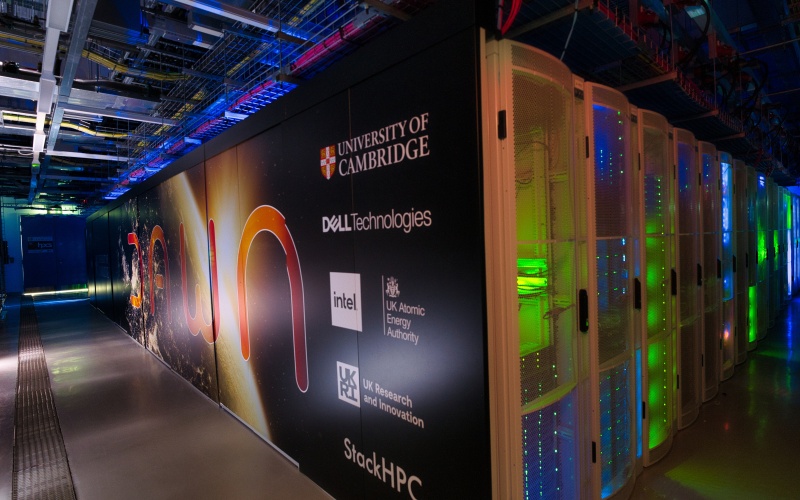
The UK’s fastest supercomputer recently became operational at a data centre in Cambridge, offering scientists the opportunity to create digital twins that could change the face of the energy sector, medical care and climate forecasting.
Known as Dawn, the supercomputer is soon to be joined by Isambard, a similar computer being built in Bristol, which in collaboration with Dawn, will increase the power of UK computers thirtyfold by working together as a so-called superfacility.
Dawn has been built by the University of Cambridge’s Research Computing Services division and is the product of a long-term partnership between the Cambridge Open Zettascale Lab, chip producer Intel and Dell Technologies, with backing from the UK Atomic Energy Authority (UKAEA) and UK Research & Innovation. Housing more than a thousand graphics processing units (GPUs) and over 500 central processing units (CPUs), Dawn will be used by scientists from across the UK.
The supercomputer is being touted as a significant step on a path towards creating computing power of a quintillion floating-point operations per second, or one exaflop – so-called exascale. To give an idea of that that means, the university estimates that every person on earth would have to make calculations 24 hours a day for more than four years to produce what can ben achieved by just a second’s worth of processing power in an exascale system.
The next stage of development for the supercomputer, if it gets the go-ahead, will be a Dawn Phase 2, which would boost processing power by ten times the current level.
Modelling fusion power
The energy industry will be closely watching how the supercomputer is deployed by scientists and engineers from the UKAEA, who plan to use Dawn to create a digital twin to help design a prototype nuclear fusion reactor, joining a global race to perfect a technology that could provide safe and almost limitless green energy that would replace fossil fuels.
Fusion power is created by combining atoms, has happens in a star, rather than by splitting them, the process used in today’s nuclear power plants. It’s potentially a lot more stable and creates less waste, but fission energy has yet to be generated in a sustainable and economically viable way.
Dr Rob Akers, director of computing programmes at UKAEA, told the University of Cambridge that access to high-end artificial intelligence was essential to the quest for fusion power and that Dawn would catalyse plant design in the virtual world that would de-risk development in the physical world.
“A fusion power plant is a very strongly coupled, very complex piece of machinery – it has to be to contain the conditions of a star down here on Earth. So, to meet the demanding timeline to deliver these power plants for the net zero era, we must design the plant ‘in silico’, that is in the virtual world, using supercomputing and AI,” he said.
The digital twins created using Dawn will model how fusion behaves and assist plant design over the next 20 years, as part of UKAEA’s programme to develop a prototype fusion energy plant, STEP, in Nottinghamshire, north central England.
Also on the agenda for Dawn are the development of digital twins in healthcare and climate modelling.
In medicine, one major goal is for AI to create a human digital twin that provides a virtual replica of an individual human, which will enable scientists to experiment with and assess the impact of new healthcare treatments than is possible in human trials.
Similarly, using digital twins to model the world’s climate much more precisely will enable scientists to predict climate change impacts, such as sea level changes, more accurately and also to run forward-looking models to work out which alterations to our interactions with the world will make the most difference in slowing global warming. The amount of data being gathered by satellites, drones and other sensors to make this possible is growing fast, but only by using AI and digital twin technology can we hope to make sense of it, the Cambridge scientists say.
(Photo credit: Jo Bishop for Cambridge Open Settascale Lab)

